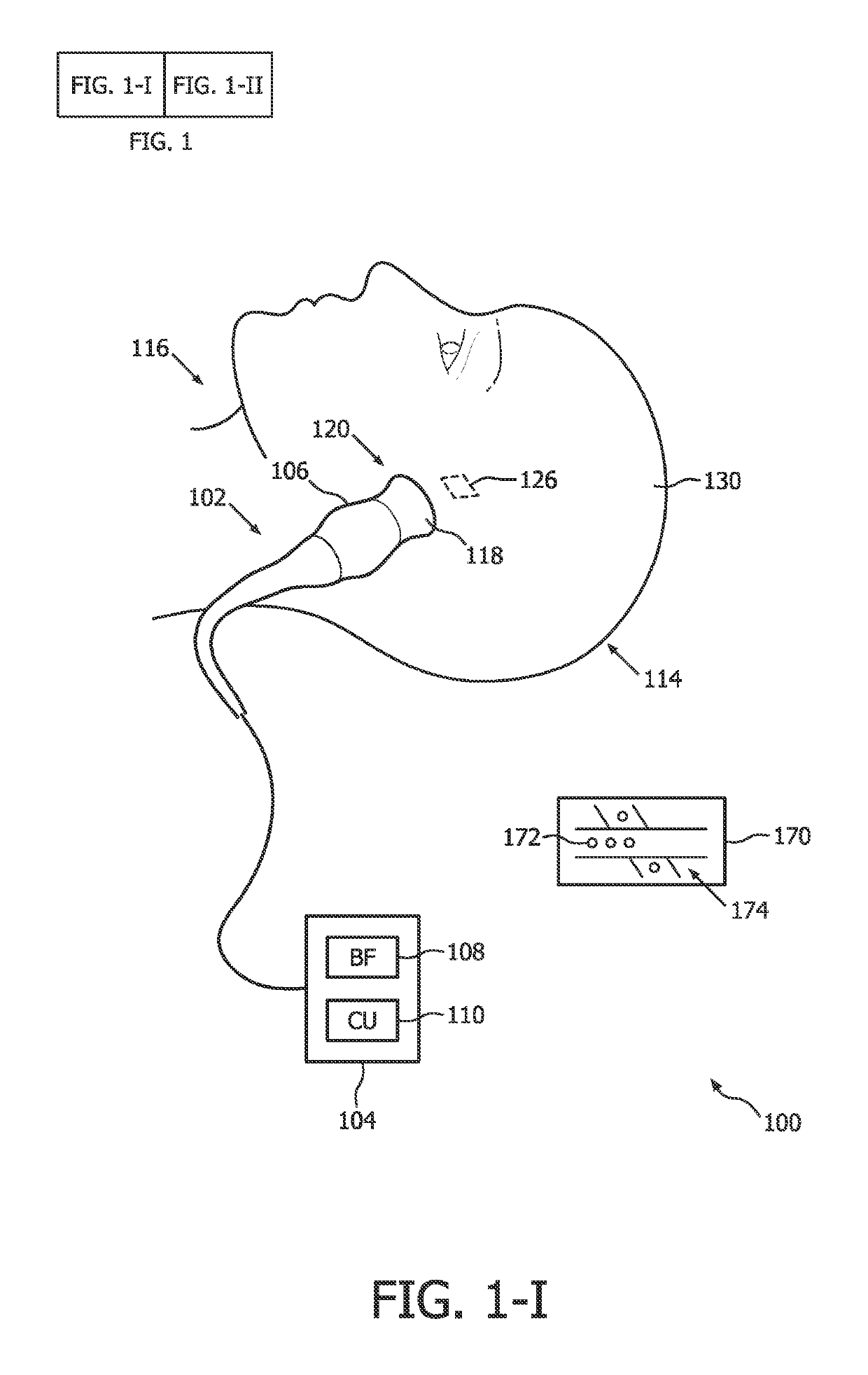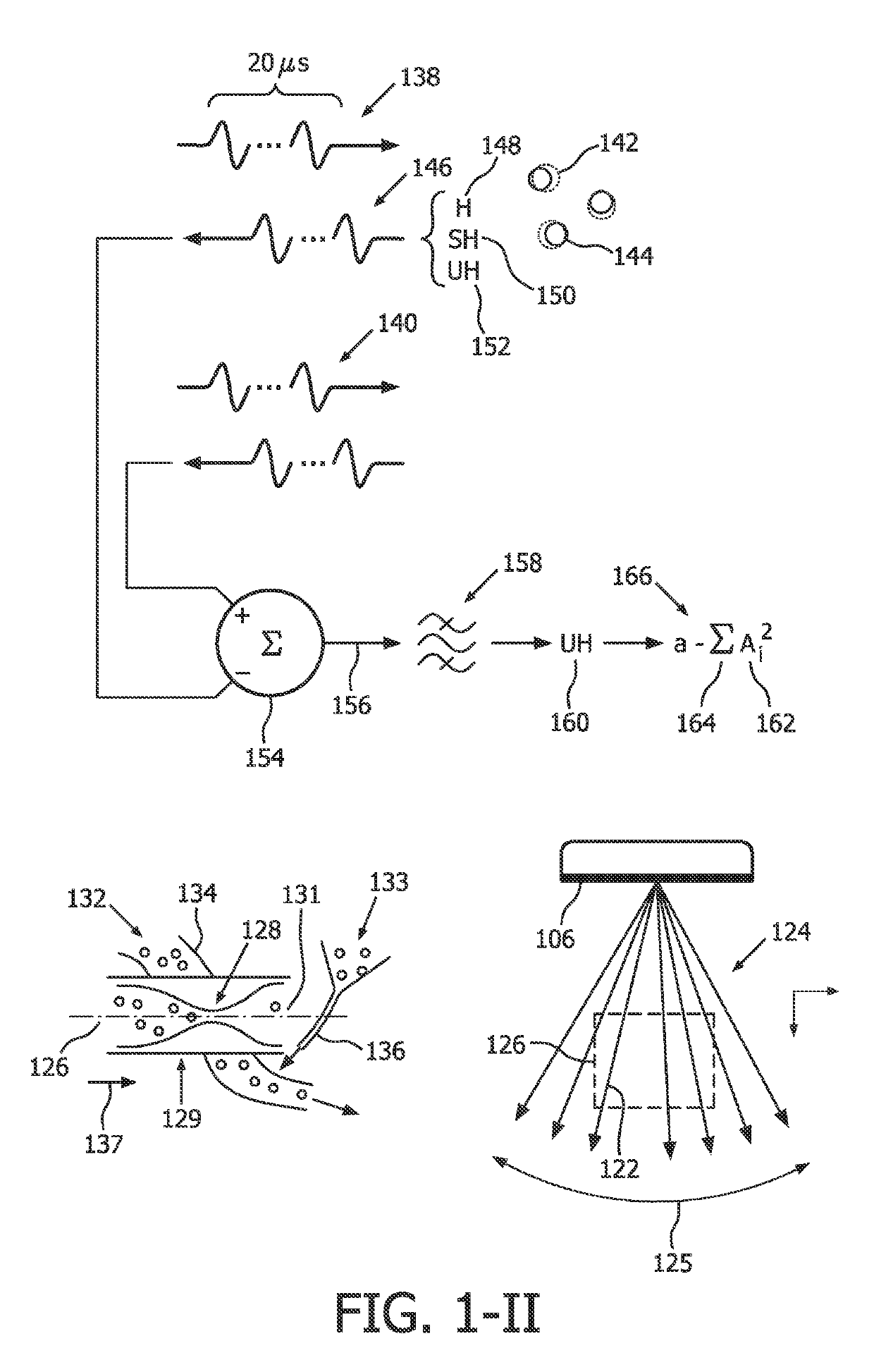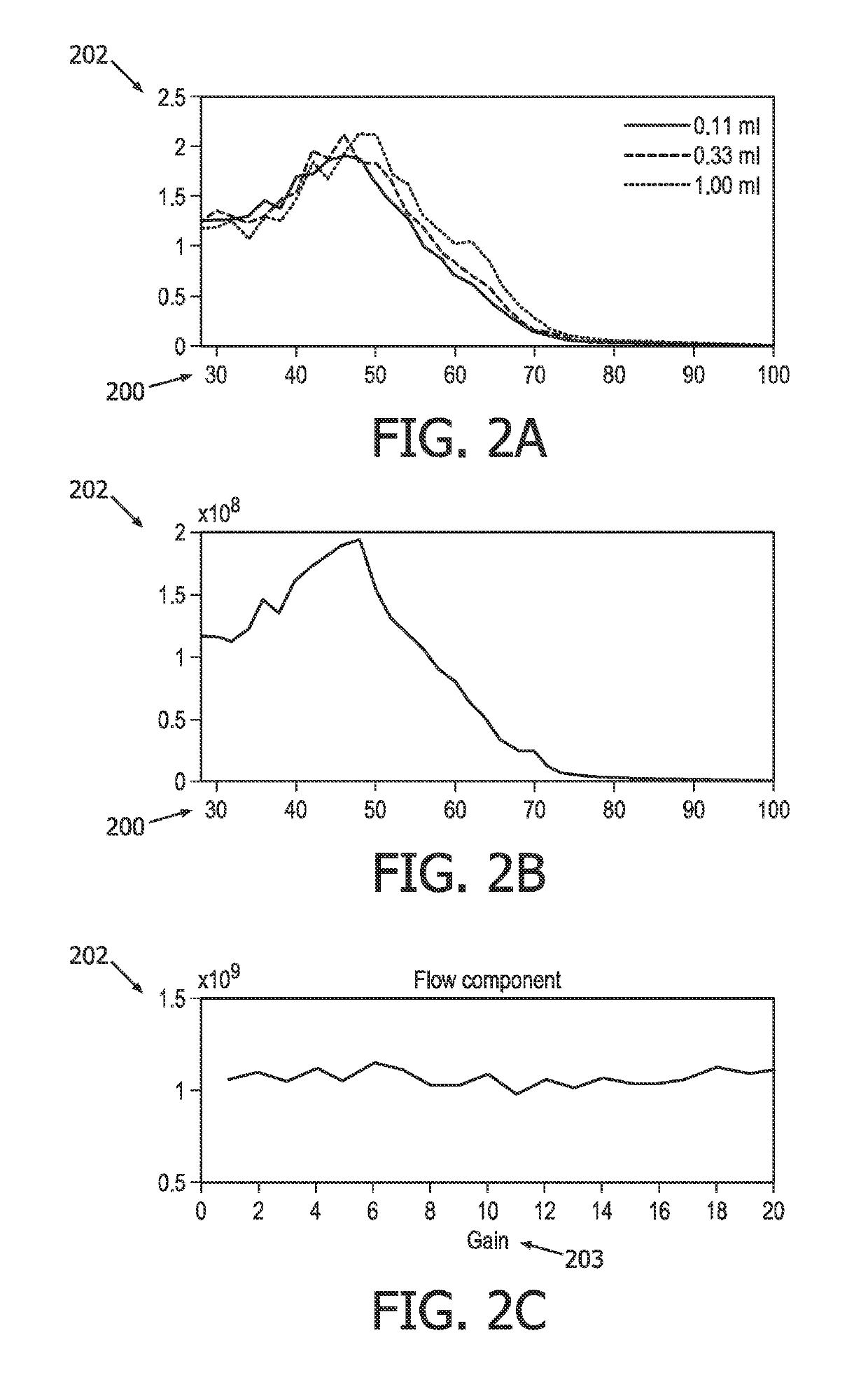Microbubble signal based temporal-bone thickness compensation for sonothrombolysis
a temporal bone thickness compensation and microbubble signal technology, applied in the field of quantifying the ultrasound dose of sonothrombolysis, can solve the problems of degrading the ability to image the brain, low treatment success, and significant restrictions on their use, and achieve the effect of wide deployment and simplified implementation
- Summary
- Abstract
- Description
- Claims
- Application Information
AI Technical Summary
Benefits of technology
Problems solved by technology
Method used
Image
Examples
Embodiment Construction
[0021]An ultrasound-based intracranial sonothrombolysis (STL) treatment and ultrasound-dose pre-quantification apparatus 100 is depicted by way of illustrative and non-limitative example in FIG. 1.
[0022]The apparatus 100 includes an ultrasound scanner 102 which further includes a console 104 and an imaging and therapy ultrasound probe 106. The console 104 includes a transmit and receive beamformer 108, and an ultrasound-scanner control unit 110. The console 104 will typically include other components, such as interactive user controls and a display, both of which are not shown. Incorporated within the console 104 is control logic, such as one or more integrated circuits and in any combination of software, hardware, and firmware.
[0023]The apparatus further comprises a head frame, head cap, headband, or headset, (not shown) for securing the probe 106 against a head 114 of a medical treatment recipient 116, such as a patient diagnosed with acute ischemic stroke. Such headpieces for int...
PUM
 Login to View More
Login to View More Abstract
Description
Claims
Application Information
 Login to View More
Login to View More - R&D
- Intellectual Property
- Life Sciences
- Materials
- Tech Scout
- Unparalleled Data Quality
- Higher Quality Content
- 60% Fewer Hallucinations
Browse by: Latest US Patents, China's latest patents, Technical Efficacy Thesaurus, Application Domain, Technology Topic, Popular Technical Reports.
© 2025 PatSnap. All rights reserved.Legal|Privacy policy|Modern Slavery Act Transparency Statement|Sitemap|About US| Contact US: help@patsnap.com



